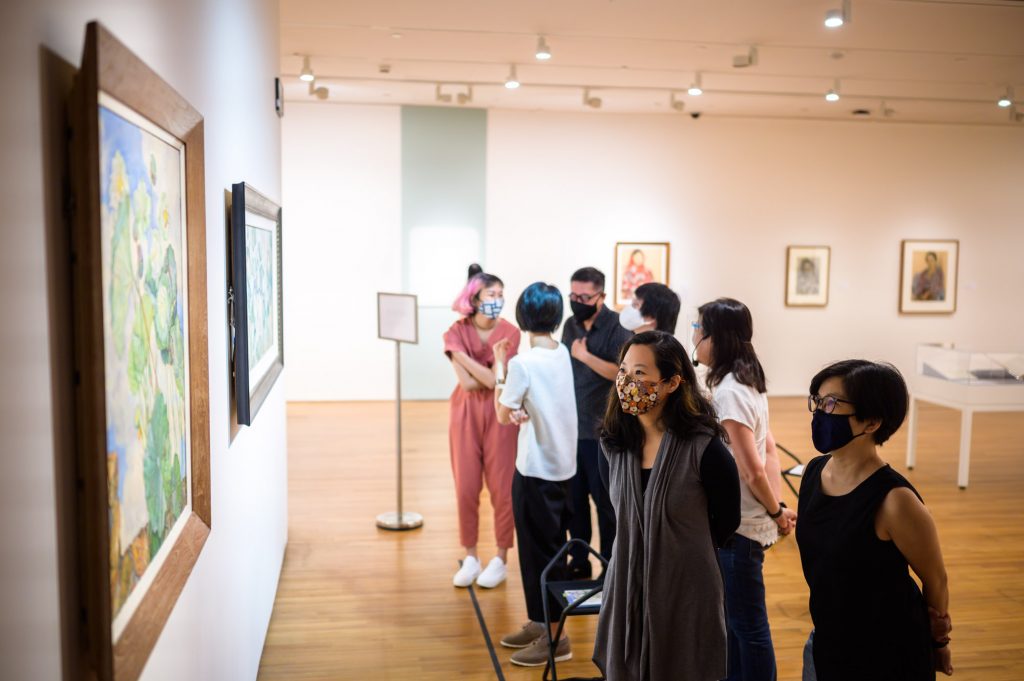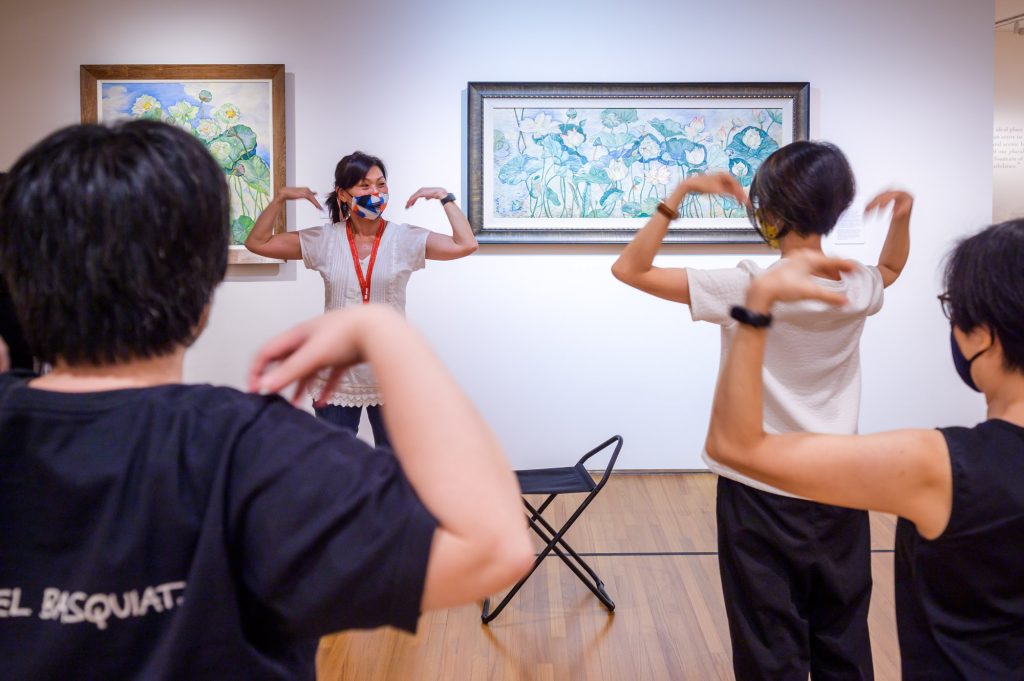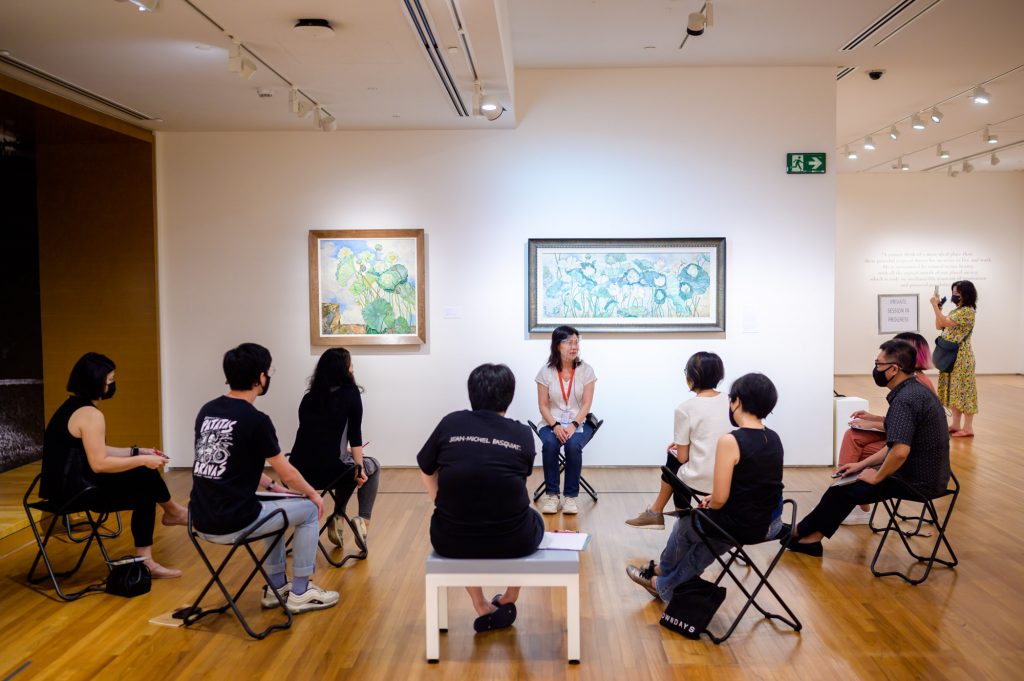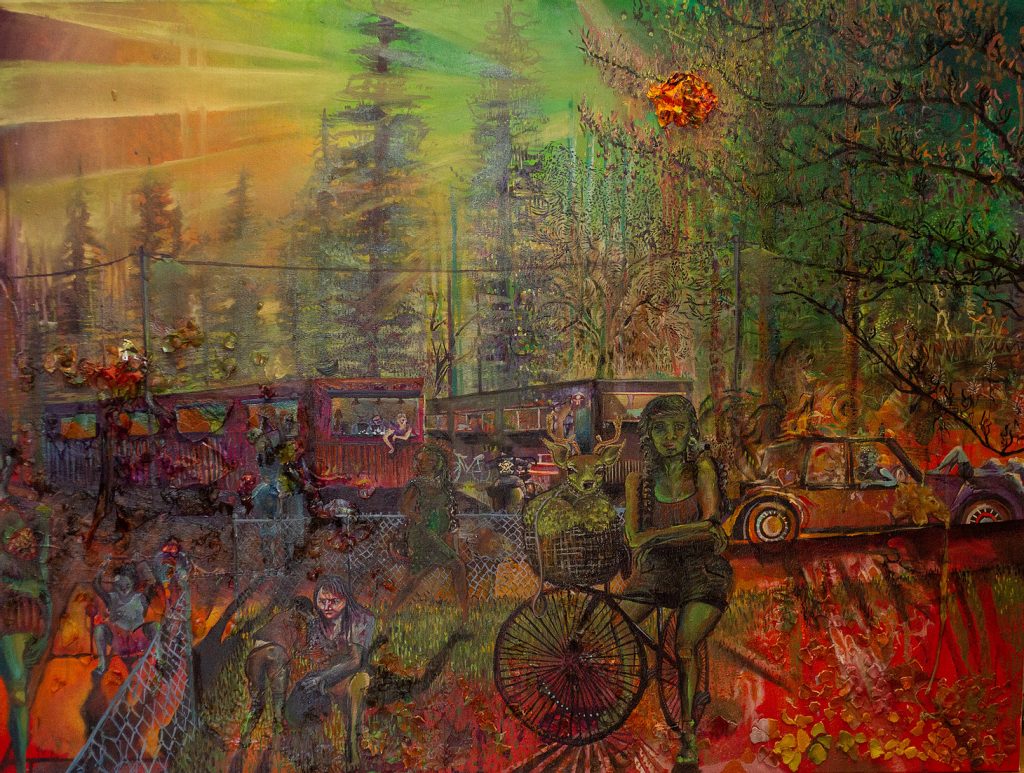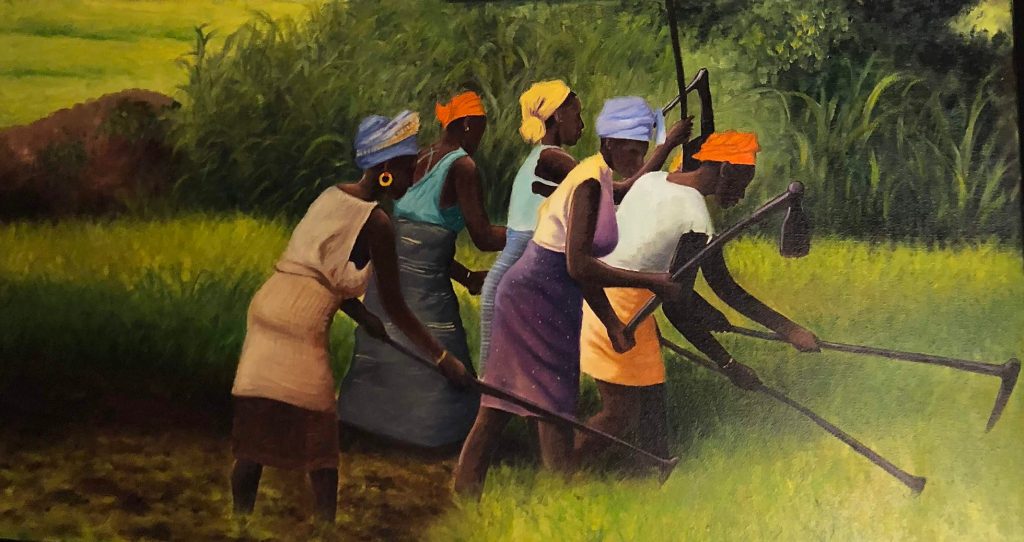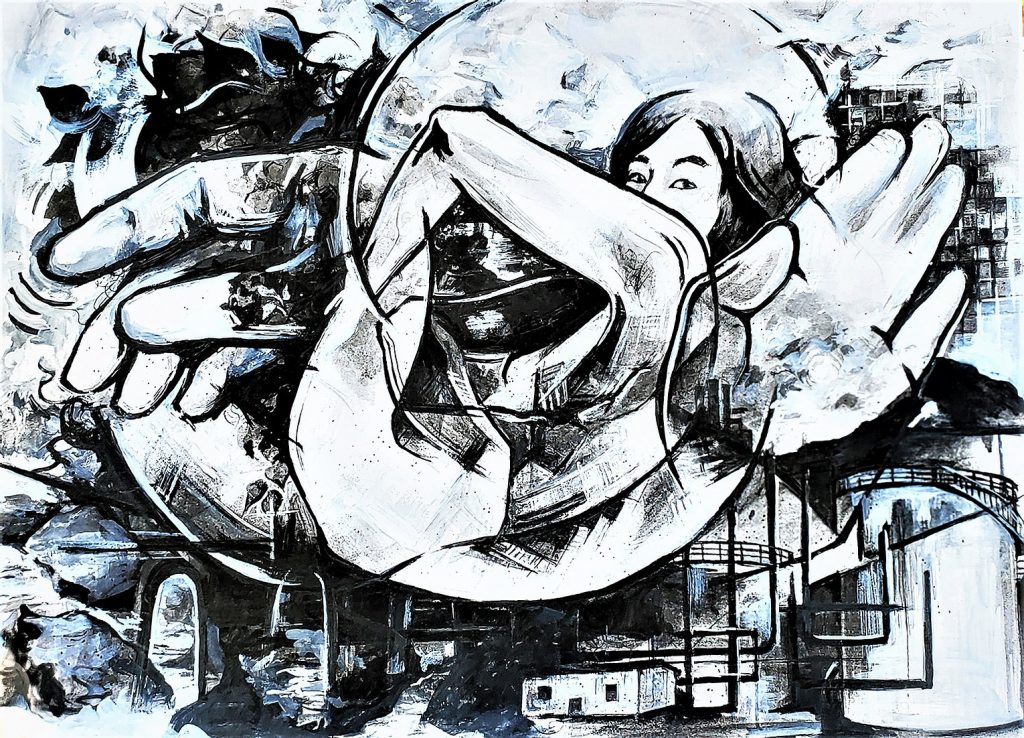For their 8th annual (and 2nd virtual) Slow Art event, the National Museum of Women in the Arts (NMWA) in Washington DC, invited visitors to take part in a Slow Art Week, which opened on April 2 and culminated in a virtual gathering on April 10, facilitated by a museum educator.
The NMWA created a virtual collection, “(Anything But) Black and White”, for the week of activities. The Museum’s aim with this collection was to remind that life is rarely clearcut, and that we should seek to discover and embrace nuance, variety, and difference. The selected artworks were available to view online throughout the week, and were on display in the museum for those who could visit in person.
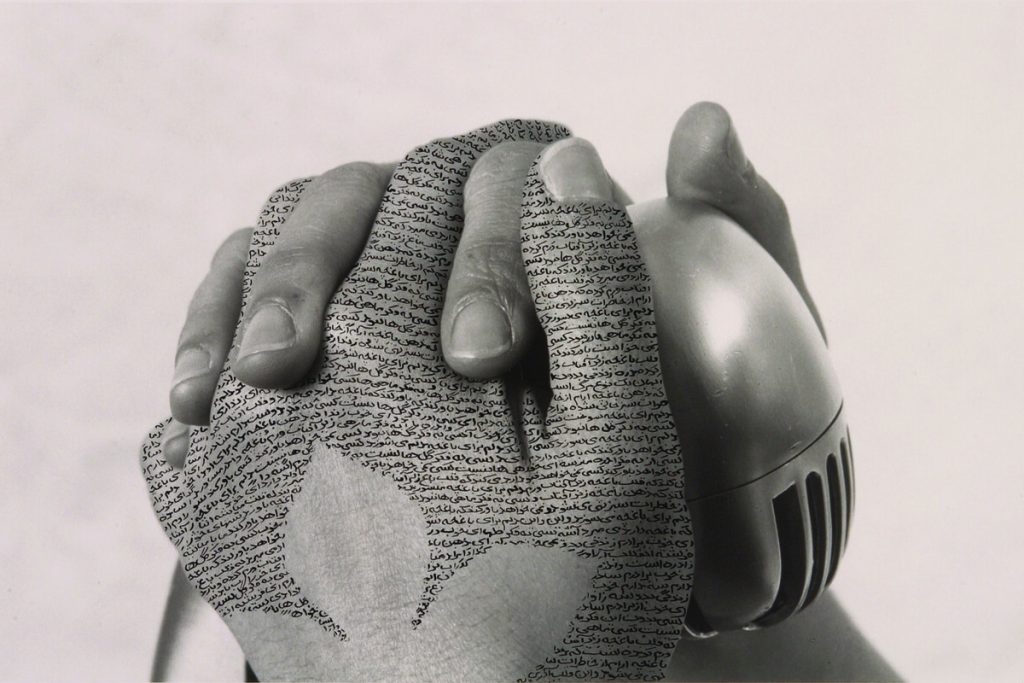
The final event of Slow Art Week, held on Saturday the 10th, featured lively conversation about the experience of slow looking. To facilitate more intimate dialogue with the group the museum used breakout rooms, which is a great tool during virtual sessions.
The NMWA provided participants a detailed PDF with instructions to review before joining the session on Saturday 10th.
We encourage museum educators and curators to review the PDF above to get a sense of the design of the whole event. We will highlight just a few things here.
We particularly liked the four guiding questions the NMWA asked participants to consider ahead of the Saturday session. Those questions were the following:
- How might art help you appreciate perspectives other than your own?
- What are your first impressions or assumptions based on? What do you need for your opinions to evolve or change?
- Have you experienced a shift from binary to spectrum thinking about a topic in the last year? What influenced that change in thinking?
- How can we seek to “find the gray” in the world around us?
Also in preparation for the Saturday session, the close looking PDF provided various entry points for participants, including prompts for kinesthetic and visual learners. The aim was to give participants the opportunity to approach the process of slow looking in way(s) most comfortable for them. Some of the provocations are listed below.
- Consider the artwork’s details. Roll up a sheet of paper to create a viewfinder. Look at the artwork through it to isolate and consider the artwork’s parts.
- Arrange things you find around your home to make a temporary found-object sculpture that is inspired by your favorite choice. Take a picture of your sculpture. Post it to social media and tag @womeninthearts and @slowartday.
- Create a bank of words and phrases that come to mind as you look at an artwork.
Slow Art Week was well received:
“For the NMWA session I did the independent slow looking first, then attended the Zoom meeting. All of it was rewarding. I enjoyed the chance for interaction in the small groups. Hearing other people talk about their observations, questions, ideas, etc. is a reminder to me that I miss things even when looking closely and/or I interpret what I see differently than other people. Above all what was most meaningful to me was the opportunity to “commune” with other, like-minded (art-minded) people. For a short time I felt less alone. What I enjoyed about the day overall (attended Slow Art Day at both NMWA and Philadelphia Museum of Art) is that I allowed myself to have a whole day for art things, which was like medicine.”
Participant’s quote
“If you want to learn about and get to know a person, you spend time with them. The same is true with works of art. Time to look, time to pause, time to breathe. Time to process and to just be. NMWA’s works of art deserve this, and so do we. These works can become our life-long friends.”
Participant’s quote
“I participated in the independent slow looking and in the Zoom meeting. For me, both were important, I guess one needs time to look in your own times and places, and you also arrive prepared to the meeting. The meeting is also important because it is the opportunity to share and to listen to other experiences and views. For me both are learning opportunities and experiences.”
Participant’s quote in response to the moderator’s questions: What element(s) of Slow Art Day did you take part in—independent slow looking, Zoom meeting, both? Which element(s) did you find most rewarding. Why?
“I did not do the independent slow looking exercise since I only decided to participate a short while ahead of enrolling in the session. During the Zoom meeting, I found the conversation that you facilitated thoughtful and respectful, with time given in between words for collective observation. When you added information about the works, it was artfully done, with just the right amount so as to further the looking dialogue that was happening between us.”
Participant’s quote
We at Slow Art Day HQ would like to thank the NMWA for their long-lasting commitment to Slow Art Day, and love how creative and inclusive their Slow Art Week was. The pandemic has proven quite isolating for many, and we agree, as one participant mentioned, that enjoying art slowly is “like medicine” for the soul.
We look forward to seeing what the NMWA comes up with for Slow Art Day 2022 (and, again, encourage museum educators to review their detailed PDF for ideas and inspiration).
Johanna, Jessica, Ashley, and Phyl
P.S. If you would like to be updated with the NMWA’s events you can follow the on Facebook, Instagram, and Twitter.

